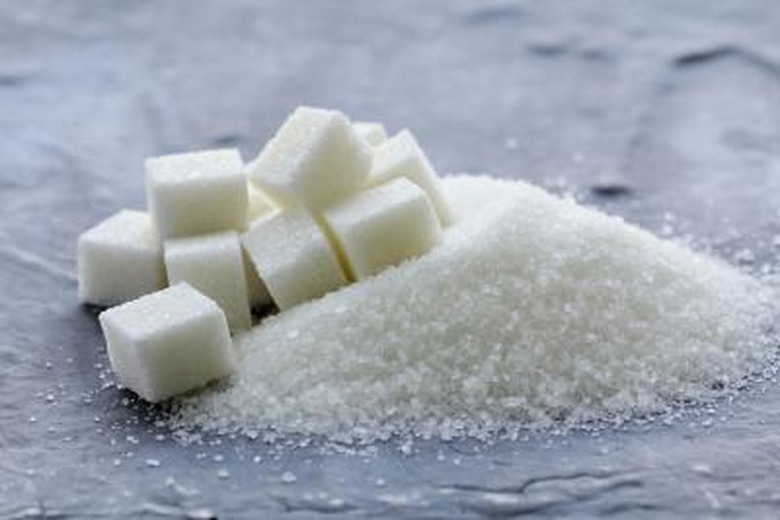What Are Three Main Elements Comprising The Structure Of Organic Molecules?
The three elements that make up over 99 percent of organic molecules are carbon, hydrogen and oxygen. These three combine together to form almost all chemical structures needed for life, including carbohydrates, lipids and proteins. Additionally, nitrogen, when paired with these elements, also forms a crucial organic molecule in the form of nucleic acids.
Carbon
Carbon
Carbon is the most essential of elements in forming organic molecules; indeed, life on Earth has been referred to as "carbon based" because of the prevalence of carbon in forming essential compounds for organisms. Carbon is so prevalent in organic compounds because of its ability to form up to six stable bonds with other atoms; as a result, carbon is often in the middle of a molecule with several different atoms, and it is this diversity that allows life to flourish. Carbon makes up approximately 10 percent of the human body.
Hydrogen
Hydrogen
Hydrogen is the most common atom in the universe, and is also the most common element in organic molecules. Because of its singular electron nature, hydrogen atoms occur in high quantities in several organic molecules, often acting as a linking point between the central carbon atom and other atoms. Additionally, hydrogen forms a strong bond with carbon, which gives more stability to an organic molecule than an average molecule. Oxygen makes up approximately 63 percent of the human body.
Oxygen
Oxygen
Oxygen is crucial element in organic molecules because, much like carbon, it can hold several different bonds (though not with the same strength of carbon, thus it is not normally in the middle of an organic molecule) and, importantly, it adds enough variety to form a near infinite amount of molecules. Carbon, hydrogen and oxygen combine to form proteins, carbohydrates (which is a combination of carbon with water) and lipids, all compounds essential to life. Oxygen makes up approximately 26 percent of the human body.
Nitrogen
Nitrogen
While not nearly as prevalent as carbon, hydrogen and oxygen, nitrogen shows up in an extremely important type of organic molecule called a nucleic acid. The two types of nucleic acids found in cells are DNA and RNA, which make up the genetic blueprint of the cell and contain all the codified information needed for the cell to function and reproduce. Nitrogen makes up approximately 1 percent of the human body.
Cite This Article
MLA
Lichtenstein, Drew. "What Are Three Main Elements Comprising The Structure Of Organic Molecules?" sciencing.com, https://www.sciencing.com/three-comprising-structure-organic-molecules-8398118/. 24 April 2017.
APA
Lichtenstein, Drew. (2017, April 24). What Are Three Main Elements Comprising The Structure Of Organic Molecules?. sciencing.com. Retrieved from https://www.sciencing.com/three-comprising-structure-organic-molecules-8398118/
Chicago
Lichtenstein, Drew. What Are Three Main Elements Comprising The Structure Of Organic Molecules? last modified August 30, 2022. https://www.sciencing.com/three-comprising-structure-organic-molecules-8398118/
